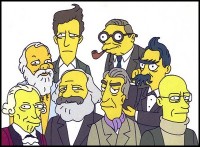20 March 2009 by A C Grayling
AFTER John Locke published his Essay Concerning Human Understanding in 1690, he sent copies to various savants of his acquaintance, asking for comments and in particular for advice on whether he had left out anything essential – for if so, he could add it to a second edition. His correspondent William Molyneaux of Dublin replied that Locke needed to say something about personal identity: that is, what makes a person the same person throughout their life.
Belief in the idea of a substantial soul – a “you” that is separate from your body – was waning. In the absence of this metaphysical entity as a convenience for underpinning personal identity, what, asked Molyneaux, makes the retired general continuous with the eager subaltern of 40 years before, and he with the red-cheeked baby in his nurse’s arms 20 years before that? In response, Locke added a chapter to his second edition which instantly caused a storm of controversy and has been famous ever since in the annals of philosophy.
In that chapter Locke argued that a person’s identity over time resides in their consciousness (he coined this term, and here introduced it to the English language) of being the same self at a later time as at an earlier, and that the mechanism that makes this possible is memory. Whereas a stone is the same stone over time because it is the very same lump of matter – or almost, allowing for erosion – and an oak tree is identical with its originating acorn because it is the same continuous organisation of matter, a person is only the same through time if he or she is self-aware of being so. Memory loss interrupts identity, and complete loss of memory is therefore loss of the self.
The divines, represented by Edward Stillingfleet, Bishop of Worcester, took umbrage and attacked Locke for ignoring the immortal soul. In 1712 The Spectator magazine ran a front-cover demand that “the wits of Kingdom” should get together in conference to settle the matter of personal identity and selfhood, because the controversy was getting out of control. In 1739, when David Hume published the first volume of his Treatise on Human Nature, he stated that there is no such thing as the self, for if one conducts the empirical inquiry of introspecting – looking within oneself – to see what there is apart from current sensations, feelings, desires and thoughts, one does not find an extra something, a “self”, over and above these things, which owns them and endures beyond them.
Thus in 50 years the unreflective idea that each individual has an immortal soul as the basis of their selfhood had changed utterly. For millennia before Locke, no one had so much as raised the question. But it was no surprise that the question should suddenly become urgent as the Enlightenment dawned, with its central idea of the autonomous individual who is a bearer of rights and responsible for his or her own moral outlook; such an idea needs a robust idea of selfhood, and the philosophers eagerly tried to make sense of it.
Hume’s sceptical view did not prevail. Kant argued that logic requires a concept-imposing self to make experience possible, and the Romantics made the self the centre of each individual’s universe: “I am that which began,” wrote Swinburne in Hertha, “Out of me the years roll, out of me God and Man.” Without a deep idea of the self there could be no Freud or psychoanalysis.
So fundamental is the idea of the self to modern human consciousness that one would expect developments in neuroscience to have a direct bearing on it. And as Thomas Metzinger argues in his stimulating new book The Ego Tunnel, reviewed on page 44 of this issue, that is exactly what is happening – with surprising and often disconcerting results.
One would expect developments in neuroscience to have a direct bearing on the idea of self
A C Grayling is a philosopher at Birkbeck, University of London










